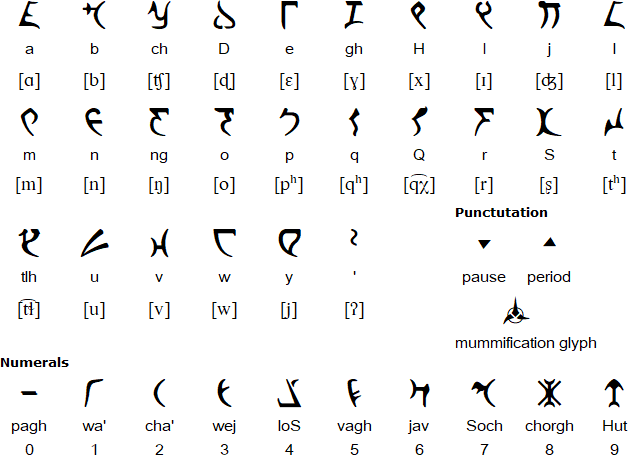 Even before my readings in my graphic design history class nowadays, the idea of many, many writing languages and utilities such as writings symbols like pictographs have caught my fancy.
Even before my readings in my graphic design history class nowadays, the idea of many, many writing languages and utilities such as writings symbols like pictographs have caught my fancy.Besides a handful of first basic words, I was fascinated by the red "not sign" composed of a circle and a line going through it. I could also read a simple word like "pizza" even if the font was messy or the Z's looked like number 3's.
Much later on in my life from this, I learned the Greek alphabet and most of the Russian alphabet just for kicks. I consequentially made many more of my own experimental writing alphabets by my own, sometimes either to see if I could write a paragraph in a suited made-up language, or just for a code alphabet for journals and secrets.
I was inspired by the efforts constructors of the Klingon language based off Star Trek to become a constructed language to outdo Esperanto (which I find highly improbable, but oh well). Below is the Klingon alphabet adapted as an actual alphabet, with their transliterations. Some of the consonants are very unusual, so it's better to read the third one down, if you know the IPA (International Phonetic Alphabet) to read dictionary-style pronunciation.
In case you need to see it in action, below is an example of a few sentences in Klingon.
After looking at this and other inspirations, it occurred to me that surely there may easily be nothing universal about the way certain writing languages work. When you have a phonetic writing system, why make letters for sounds not in your language? A writing language usually only documents the sounds, syllables, words, etc that are represented already in the spoken counterpart of the language.
Some interesting links:
http://www.omniglot.com/ (a great website to discover various writing languages, such as Klingon)
http://www.omniglot.com/writing/klingon.htm (the specific page on Klingon)



Pretty useless to compare Klingon with Esperanto. Especially because Esperanto is designed to be an international language, whereas Klingon is not.
ReplyDeleteProbably less than 10 percent of all educated people have even heard of Esperanto so do not know that, for example, the Esperanto Wikipedia has about 150,000 articles, (which get about 400,000 views per day). By contrast the total number of articles about Klingon in Wikipedia total only 189, and nothing has been added since 2006.
The World Esperanto Association enjoys consultative relations with both the United Nations and the Council of Europe. Does Klingon ?
A pity also that it is not generally known that you may find Esperanto speakers in more than 130 countries. Or that more people in Burundi per head of the population speak Esperanto than in any other country. Thirty schools in Burundi teach Esperanto ; how many teach Klingon?
For those who think Klingon should be the future international language please see
http://www.youtube.com/watch?feature=player_embedded&v=8TQGVh025E4